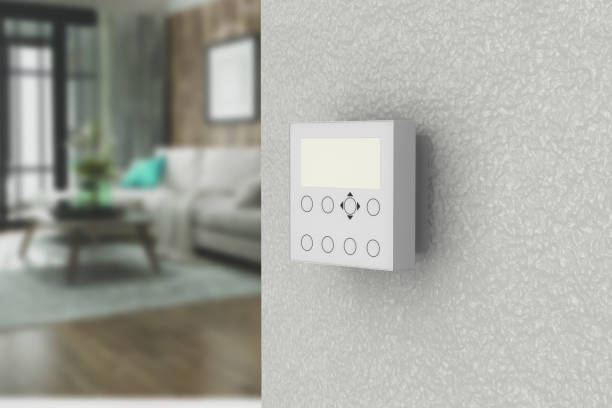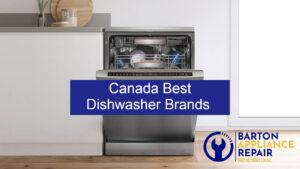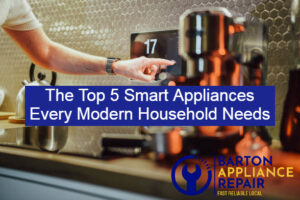Appliances are not the same as they used to be. Modern appliances are truly marvels of engineering as they can easily do complex tasks with the help of delicate and intricate parts working together. As much as this is an amazing part, it can also turn out to be a bad thing. Even if one part malfunctions, the whole harmony gets disrupted and the machine stops working perfectly. To fix them, you first need to understand how these parts communicate with each other and how important it is to know this when general troubleshooting. Today this guide will tell you all about appliance communication systems and practical insights you should know about diagnosing common issues.
The Basis of Appliance Communication
At the heart, household appliances usually work through a well-planned network of electrical and mechanical parts. These systems use many different communication methods to coordinate with each other and operate. The process is the same be it simple electrical signals to advanced digital protocols.
The most basic communication chain that is followed in all appliances has a three-part structure: input devices (sensors and controls), processing units (control boards), and output parts (Motors, heating elements, and displays). Each part of an appliance plays an important role in maintaining the proper functioning of the machine. A breakdown in any kind of link can lead to operational issues.
Related: Washing Machine Diagnostic Mode: A Beginner’s Guide to Efficient Troubleshooting
Control Boards: The Brain of Modern Appliances
The main control board is very much similar to the central nervous system of any modern appliance. This advanced part processes information from multiple sources and coordinates with everything with various functions. For example, in a washing machine, the control board gets data from:
- Temperature sensors monitoring water heat
- Water level sensors tracking fill status
- Door lock mechanisms making sure of safety
- Speed sensors measuring drum rotation
- Time circuits managing cycle progression
When the control board is having issues and you are general troubleshooting it, make sure to look for signs like weird display behaviour, unresponsive buttons, or incomplete cycle operations. These symptoms usually indicate communication breakdowns between the board and other parts.
Sensors: The Eyes and Ears of Your Appliances
Sensors make a very essential communication network within appliances. They constantly monitor all the conditions and send out data to the control board. The most common sensor types include:
Temperature Sensors
These parts work to maintain precise temperature control in appliances like refrigerators, ovens and washing machines. A faulty sensor might cause your fridge to overcool or your oven to underheat. That’s why communication between sensors and the control board is important. It happens with the help of resistance changes such as temperature fluctuates, and the electrical resistance in the sensor changes, sending different signals to the board.
Pressure and Level Sensors
It is usually found in washing machines and dishwashers. These sensors monitor water levels and pressure. They usually communicate through either the mechanical float systems or electronic pressure switches. When these sensors fail to communicate properly, you will notice problems like over-filling or insufficient water levels.
Related: How Often Should You Clean Your Dishwasher Filter and Why?
Communication Protocols in Modern Appliances
Today’s smart appliances use a lot of different protocols to communicate both ways – internally and externally. These protocols range from simple analog signals to complex digital communications.
Analog Signals
Traditional appliance parts usually communicate with the help of basic electrical signals. Voltage changes show different states or conditions. For example, a dryer’s moisture sensor uses different resistance levels to communicate fabric dampness to the control board.
Digital Protocols
Modern appliances mostly use digital communication protocols like:
- Serial Communication for internal part interaction
- Wi-Fi for smart home integration
- Bluetooth for mobile device connectivity
- Near Field Communication for quick pairing and diagnostics
Common Communication-Related Problems and Solutions
You should understand how each part communicates, this will help you identify and solve common issues quickly:
Signal Interference
Problems like electric noises from other devices or damaged wiring can disrupt communication between parts. This might end up in unusual behaviour or odd functionality. You can easily solve them by:
- Checking for loose or damaged wiring connections
- Make sure there is proper grounding
- Replacing shielding on sensitive components
- Moving interfering devices away from the appliance
Sensor Calibration Issues
Over time, sensors can become miscalibrated, which leads to communication errors. The fridge can run too cold or an oven can end up heating unevenly. Regular calibration checks and adjustments will help maintain accurate communication between sensors and control boards.
Control Board Communication Failures
When the control board struggles to communicate with parts, systematic testing helps identify the source. You can easily do a general troubleshooting by:
- Testing voltage outputs to various parts
- Checking for burnt or damaged connections
- Verifying proper signal transmission between parts
- Examining error codes stored in memory
The Future of Appliance Communication
As technology is continuously evolving, appliance communication systems also continue to change. Modern developments include:
Predictive Diagnostics
Even smart appliances, nowadays, use machine learning algorithms to analyze component communication patterns. They can predict potential failures before they occur. This will push you towards maintenance habits rather than going for costly repairs.
Remote Troubleshooting
With the help of internet connectivity, manufacturers can now diagnose issues by accessing appliance data remotely. This advancement helps in providing more precise and efficient service by understanding how parts are communicating (or are failing to) before a technician arrives.
Related: A Beginner’s Guide to Measuring Thermistor Resistance in Appliances
Conclusion
Understanding how appliance parts communicate with each other provides a lot of valuable information for general troubleshooting or solving general connection problems. It doesn’t matter if you are dealing with traditional analog signals or advanced digital protocols, the key lies in identifying that each and every part plays an important role in the larger communication network. When you start to approach the problems with system-level understanding, users and technicians can diagnose and solve issues in a better way. If you’re not able to do the general troubleshooting by yourself, simply give Barton Appliance Repair a call. We will be there to solve your appliance’s issues.





